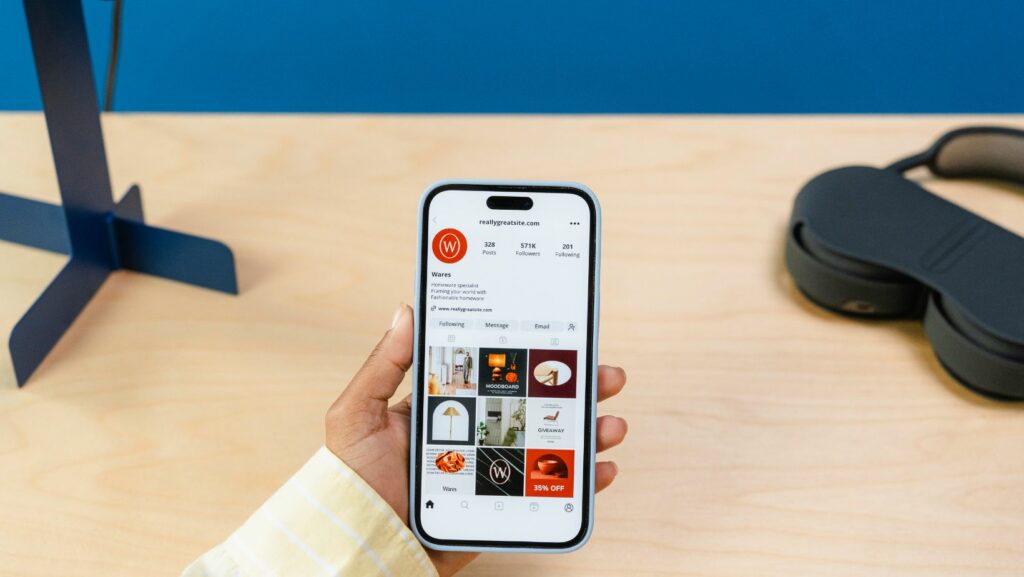Social Media Designer
- Role of Social Media Designers: Social media designers are essential for creating visually compelling content that enhances a brand’s online presence and engages target audiences.
- Key Responsibilities: Their primary tasks include designing graphics, developing branding guidelines, collaborating with marketing teams, and monitoring design trends.
- Impact on Branding: Effective social media design helps establish a consistent visual identity, which can increase brand recognition and revenue by up to 23%.

- Audience Engagement: Eye-catching visuals are crucial for audience growth, with visual content being shared 40 times more often than text-based content.
- Essential Tools: Social media designers utilize tools like Adobe Creative Cloud, Canva, and social media management platforms (e.g., Hootsuite, Buffer) to streamline their content creation and marketing strategies.
- Emerging Trends: Current trends in social media design include visual storytelling and the rise of video content, both vital for capturing audience attention and enhancing engagement.
In today’s digital landscape, social media isn’t just a platform for connection; it’s a powerful marketing tool that can make or break a brand. Enter the social media designer, a creative professional who transforms ideas into visually compelling content tailored for various online platforms. With the ability to capture attention in mere seconds, these designers play a crucial role in shaping a brand’s identity and engaging its audience.
Social media designers blend artistry with strategy, crafting eye-catching graphics, videos, and animations that resonate with users. As businesses increasingly rely on social media for growth, the demand for skilled designers continues to rise. Understanding the nuances of each platform and the preferences of target audiences, they ensure that every post not only looks good but also drives results.
Overview of Social Media Designers
Social media designers play a crucial role in shaping a brand’s online presence. They focus on creating visually engaging content that resonates with target audiences and enhances brand identity.
Role and Responsibilities
Social media designers are responsible for various tasks, including:
- Creating Visual Content: They design graphics, images, and videos tailored for social media platforms.
- Developing Branding Guidelines: They establish visual standards to ensure brand consistency across posts.
- Collaborating with Marketing Teams: They work alongside marketers to align visual strategies with campaign goals.
- Monitoring Trends: They stay updated on current design trends and platform specifications to maintain relevance.
- Analyzing Engagement Metrics: They track performance data to refine content strategies based on audience interactions.
- Graphic Design Proficiency: They use design software like Adobe Creative Suite or Canva effectively.
- Strong Communication Skills: They articulate concepts clearly to team members and stakeholders.
- Creativity and Innovation: They generate fresh, unique ideas that capture audience interest.
- Understanding of Social Media Algorithms: They comprehend how platforms prioritize content to maximize reach.
- Time Management Competence: They manage multiple projects and deadlines efficiently.
Importance of Social Media Design
Social media design plays a crucial role in shaping brand perception and enhancing user interaction. Effective design strategies elevate a brand’s online presence and facilitate audience engagement.
Impact on Branding
Social media design significantly influences branding by establishing a consistent visual identity. Consistency enhances brand recognition, with studies showing that consistent branding can increase revenue by up to 23%. Designers create logos and graphics that reflect a brand’s values, mission, and personality, helping audiences associate visuals with specific brands. High-quality, impactful designs foster trust, encouraging users to engage with the brand more deeply.
Engagement and Audience Growth
Engaging designs directly contribute to audience growth on social media platforms. Visual content is shared 40 times more often than textual content, demonstrating the power of appealing visuals. Effective social media designers utilize eye-catching graphics, infographics, and videos to capture audience attention. They create designs optimized for each platform’s specifications, enhancing visibility and shares. High-engagement visuals lead to increased follower counts and audience interaction, ultimately driving business growth.
Tools and Software for Social Media Designers
Social media designers rely on various tools and software to create compelling content and manage their workflows efficiently. These resources streamline the design process and enhance collaboration among team members.
Graphic Design Tools
Graphic design tools prove essential for creating visually stunning content. Popular software includes:
- Adobe Creative Cloud: Offers industry-standard applications like Photoshop, Illustrator, and InDesign. Designers use these for image editing, vector graphics, and layout creation.
- Canva: Provides an accessible platform with pre-designed templates for quick content creation. Ideal for those who need to produce graphics without extensive design skills.
- Figma: Supports collaborative design work, enabling multiple team members to work on projects simultaneously. It’s commonly used for UI/UX design as well.
- Affinity Designer: Serves as an alternative to Adobe, offering vector design capabilities with a one-time purchase rather than a subscription.
These tools enable designers to craft eye-catching visuals that enhance brand messaging and engagement.
Social Media Management Platforms
Social media management platforms help streamline content scheduling and analytics tracking. Key platforms include:
- Hootsuite: Facilitates scheduling posts across various social media channels. It offers analytics to measure engagement and audience reach.
- Buffer: Simplifies post management and provides insights into content performance. Users can schedule posts, analyze results, and optimize future campaigns.
- Sprout Social: Combines social media scheduling with robust reporting. Designers can track audience interactions and refine strategies based on analytics.
- Later: Focuses on visual content and allows designers to plan and schedule posts visually. It’s particularly beneficial for Instagram content creation.
These platforms assist social media designers in organizing their workflow and maximizing the impact of their content.
Trends in Social Media Design
Social media design continually evolves to meet changing audience preferences and technological advancements. Designers must stay ahead of emerging trends to create engaging content that resonates with users.
Visual Storytelling
Visual storytelling integrates narrative elements with design to communicate messages compellingly. Designers leverage illustrations, infographics, and animations to enhance storytelling, making complex information more digestible. This trend emphasizes authenticity, encouraging brands to share genuine stories that connect emotionally with audiences. Research shows that storytelling can increase retention rates by up to 70%, making this approach critical for effective design.
The Rise of Video Content
 Video content dominates social media engagement, with users preferring motion graphics over static images. The demand for short, engaging videos has led designers to craft clips that capture attention quickly. Platforms prioritize video content in their algorithms, making it essential for brands to integrate video into their strategies. For instance, visual content that includes video generates 1200% more shares than text and images combined. As a result, social media designers focus on creating eye-catching video graphics optimized for each platform, increasing audience interaction and boosting brand visibility.
Video content dominates social media engagement, with users preferring motion graphics over static images. The demand for short, engaging videos has led designers to craft clips that capture attention quickly. Platforms prioritize video content in their algorithms, making it essential for brands to integrate video into their strategies. For instance, visual content that includes video generates 1200% more shares than text and images combined. As a result, social media designers focus on creating eye-catching video graphics optimized for each platform, increasing audience interaction and boosting brand visibility.
Online Presence and Engagement
The role of a social media designer is crucial in shaping a brand’s online presence and engagement strategy. By merging creativity with strategic insight, these professionals craft visual content that resonates with audiences and drives interactions. As trends evolve and technology advances, staying adaptable is key for designers in this fast-paced environment.
With the right tools and a keen understanding of audience preferences, social media designers can significantly enhance brand visibility and loyalty. Their expertise not only influences user engagement but also contributes to overall business growth. Investing in skilled social media designers is essential for brands aiming to thrive in today’s competitive digital landscape.

